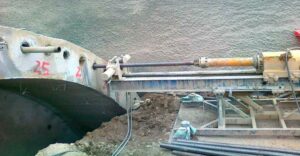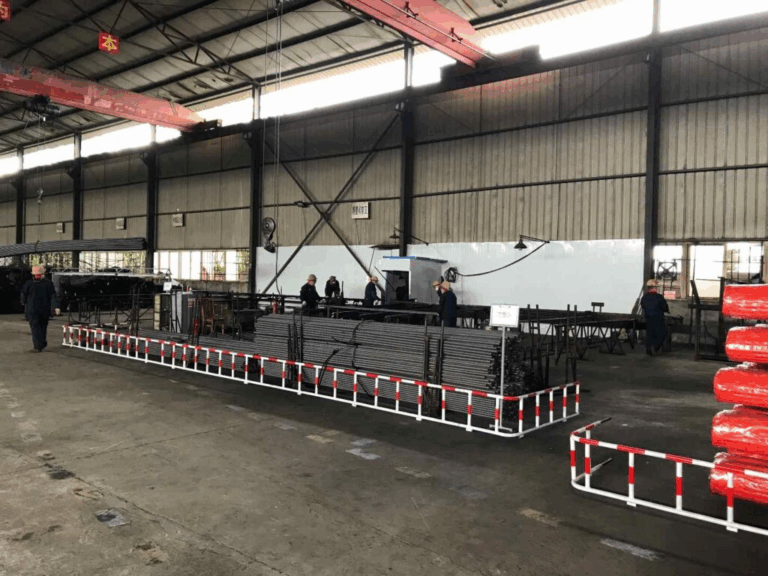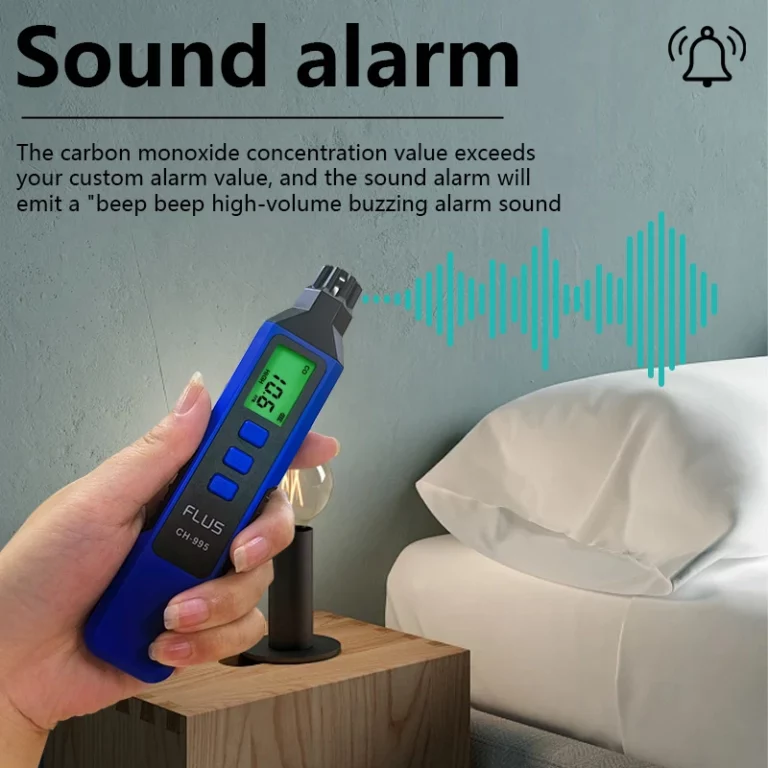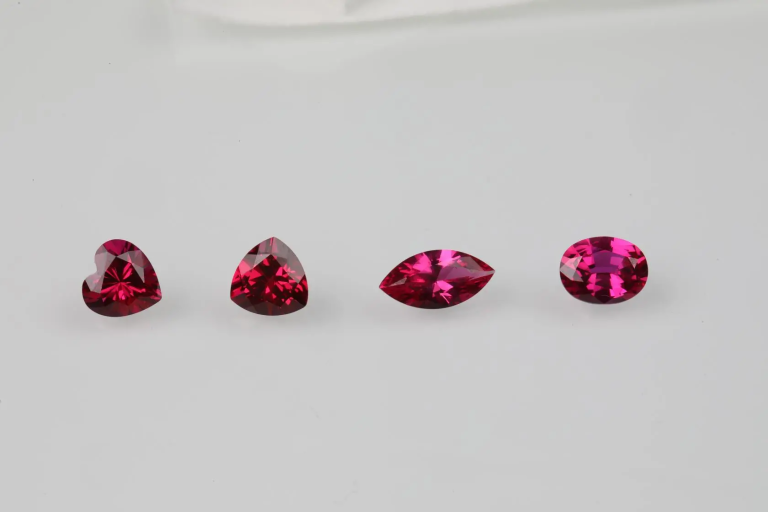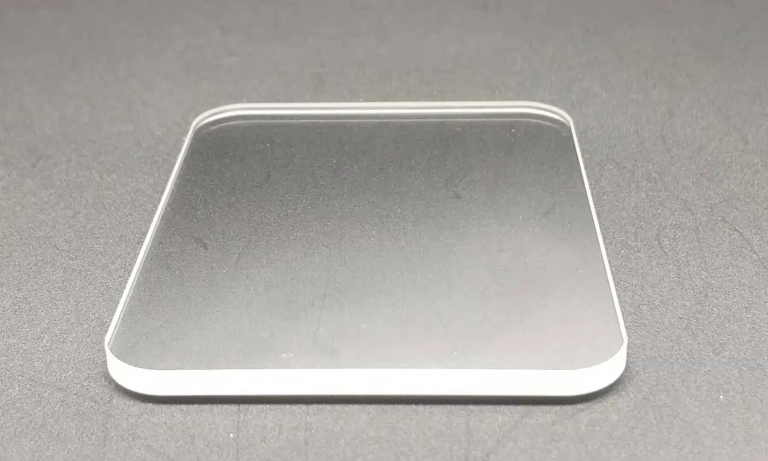Table of Contents
Whether you’re building a steel structure, securing heavy machinery, or erecting highway barriers, the correct installation of ground anchor bolts plays a critical role in ensuring structural stability. Misalignment, poor anchoring depth, or the wrong installation technique can lead to structural failure, increased maintenance costs, and even safety risks.
This article provides a detailed, practical guide on how to install ground anchor bolts correctly, complete with common errors to avoid, technical specifications to follow, and comparisons with similar fastening methods.
Understanding Ground Anchor Bolts and Their Function
Ground anchor bolts, also known as foundation anchor bolts or hold-down bolts, are long metal fasteners embedded into concrete foundations. They are designed to anchor structural elements, absorb tensile and shear forces, and ensure that superstructures remain securely fixed.
Key Applications:
- Securing steel columns or machinery bases
- Wind turbine tower installations
- Retaining wall and light pole foundations
- Seismic or wind load reinforcement
Technical Note: The typical tensile strength for steel anchor bolts ranges from 400 MPa to 800 MPa, depending on material grade and heat treatment.
Tools and Materials Needed for Installation
Before installation, ensure the following materials and tools are available:
- Ground anchor bolts (L-type, J-type, or straight rods)
- Reinforcement bars and templates
- Concrete mix (based on structural requirements)
- Leveling tools and tape measures
- Torque wrench (for post-installation tightening)
- Epoxy or grout (for chemical anchoring, if applicable)
Step-by-Step Installation Process of Ground Anchor Bolts
1. Pre-Installation Planning and Layout
A successful installation starts with precise planning.
- Design Specifications: Refer to engineering blueprints to determine bolt diameter, length, embedment depth, and layout spacing.
- Template Use: Use steel or plywood templates to maintain exact bolt spacing and alignment during concrete pour.
- Bolt Types: Choose based on load type and installation method.
| Bolt Type | Best Use Case | Common Sizes |
| L-Type | General construction, light loads | M12–M36 |
| J-Type | Dynamic load resistance | M16–M42 |
| Threaded Rods | Adjustable baseplates, heavy machinery | M20–M48 |
2. Placement Before Concrete Pour
Embed the bolts into the foundation using these guidelines:
- Depth: Minimum embedment is typically 12x the bolt diameterfor cast-in-place bolts.
- Concrete Cover: Maintain at least 50mmcover from all sides to avoid corrosion and ensure anchorage.
- Verticality: Use a spirit level to keep the bolts perpendicular to the template surface.
Mistakes like shifting bolts during pour or poor vibration control can cause misalignment, rendering the anchorage ineffective.
3. Post-Pour Alignment and Curing
- Do Not Disturb Bolts: Avoid adjusting bolts once the concrete starts setting (usually within 60 minutes).
- Curing Time: Concrete should cure for at least 7 daysbefore applying load (28 days for full strength).
- Template Removal: Carefully detach templates after concrete hardening to avoid movement.
4. Alternative: Chemical Anchoring Installation
In some retrofitting or post-installed applications, chemical anchoring with epoxy resins is used instead of cast-in-place bolts.
Key Steps:
- Drill holes based on design diameter and depth (usually 10–15x bolt diameter).
- Clean the hole thoroughly with air and brush.
- Inject chemical adhesive evenly.
- Gently rotate the threaded rod while inserting it to achieve a secure and complete bond.
- Allow curing per adhesive manufacturer’s specifications (typically 24 hours).
| Installation Method | Best For | Load Performance | Cost Efficiency |
| Cast-in-place bolts | New construction | Excellent | High |
| Chemical anchor bolts | Retrofit or post-concrete fix | Very good (if correct) | Moderate |
Common Installation Mistakes to Avoid
Even with the right materials, poor execution can compromise structural safety.
Mistakes to Watch For:
- Improper Embedment Depth: Leads to pull-out under tension
- Misalignment: Makes mounting baseplates difficult
- Insufficient Concrete Cover: Increases corrosion risk
- Over-Tightening Too Early: Can crack curing concrete
Tip: Always follow ACI 318 or Eurocode 2 guidelines for foundation anchorage in structural design.
Final Torque and Load Testing
Once concrete has fully cured:
- Use a calibrated torque wrenchto apply the specified bolt torque based on engineering calculations.
- Conduct pull-out or tension testing(e.g., proof load test) if required for structural certification.
For industrial or critical infrastructure, documentation of bolt inspection and testing is often required for compliance with ISO or ASTM standards.
Comparing Ground Anchor Bolts with Similar Fasteners
Understanding when to use ground anchor bolts vs. other anchoring systems is crucial for choosing the right method.
| Feature | Ground Anchor Bolts | Expansion Bolts | Adhesive Anchors |
| Installation Stage | Before concrete pour | After concrete cured | After concrete cured |
| Load Capacity | Highest (especially tension) | Moderate | High (if installed properly) |
| Durability | Excellent | Prone to loosening over time | Highly dependent on adhesive |
| Reusability | No | Partially | No |
Ground anchor bolts offer superior performance in long-term heavy-load applications, particularly where wind, seismic, or vibration loads are present.
Conclusion
Correct installation of ground anchor bolts is critical for the long-term safety and functionality of any structure. Whether you’re working on a commercial building, a highway sign, or industrial equipment, following engineering guidelines and using the right technique—from pre-layout to torque testing—is non-negotiable.
Don’t cut corners. Use precise templates, ensure embedment depth, and always follow curing schedules. Proper installation not only protects your investment but also ensures compliance and structural integrity.
0
